IL-1 RII Products
Two distinct types of receptors that bind the pleiotropic cytokines IL-1 alpha and IL-1 beta have been described. The IL-1 receptor Type I is an 80 kDa transmembrane protein that is expressed predominantly by T cells, fibroblasts, and endothelial cells. IL-1 receptor Type II is a 68 kDa transmembrane protein found on B lymphocytes, neutrophils, monocytes, large granular leukocytes and, endothelial cells. Both receptors are members of the immunoglobulin superfamily and show approximately 28% sequence similarity in their extracellular domains. The two receptor types do not heterodimerize in a receptor complex.
IL-1 RII has a short cytoplasmic domain and does not transduce IL-1 signals. In addition to the membrane-bound form of IL-1 RII, a naturally-occurring soluble form of IL-1 RII has been described. It has been suggested that the Type II receptor, either as the membrane-bound or as the soluble form, serves as a decoy for IL-1 and inhibits IL-1 action by blocking the binding of IL-1 to the signaling Type I receptor complex. Recombinant IL-1 soluble receptor type II is a potent antagonist of IL-1 action.
98 results for "IL-1 RII" in Products
98 results for "IL-1 RII" in Products
IL-1 RII Products
Two distinct types of receptors that bind the pleiotropic cytokines IL-1 alpha and IL-1 beta have been described. The IL-1 receptor Type I is an 80 kDa transmembrane protein that is expressed predominantly by T cells, fibroblasts, and endothelial cells. IL-1 receptor Type II is a 68 kDa transmembrane protein found on B lymphocytes, neutrophils, monocytes, large granular leukocytes and, endothelial cells. Both receptors are members of the immunoglobulin superfamily and show approximately 28% sequence similarity in their extracellular domains. The two receptor types do not heterodimerize in a receptor complex.
IL-1 RII has a short cytoplasmic domain and does not transduce IL-1 signals. In addition to the membrane-bound form of IL-1 RII, a naturally-occurring soluble form of IL-1 RII has been described. It has been suggested that the Type II receptor, either as the membrane-bound or as the soluble form, serves as a decoy for IL-1 and inhibits IL-1 action by blocking the binding of IL-1 to the signaling Type I receptor complex. Recombinant IL-1 soluble receptor type II is a potent antagonist of IL-1 action.
| Sensitivity: | 10 pg/mL |
| Applications: | ELISA |
| Assay Range: | 31.2 - 2,000 pg/mL (Cell Culture Supernates, Serum, EDTA Plasma, Heparin Plasma, Citrate Plasma) |
| Reactivity: | Mouse |
| Details: | Goat IgG Polyclonal |
| Applications: | WB, Flow, IHC, CyTOF-ready |
| Reactivity: | Human |
| Details: | Mouse IgG2a Monoclonal Clone #32437 |
| Applications: | WB, ICC, Neut |
| Reactivity: | Human |
| Details: | Goat IgG Polyclonal |
| Applications: | WB, Neut |
| Reactivity: | Human |
| Details: | Mouse IgG1 Monoclonal Clone #34141 |
| Applications: | WB, Neut |
| Reactivity: | Human |
| Details: | Mouse IgG1 Monoclonal Clone #34141 |
| Applications: | Flow |
| Reactivity: | Human, Mouse, Rat |
| Details: | Rabbit IgG Polyclonal |
| Applications: | IHC, WB, ICC/IF, ChIP |
| Reactivity: | Human |
| Details: | Mouse IgG1 Monoclonal Clone #34141 |
| Applications: | Flow |
| Reactivity: | Human |
| Details: | Goat IgG Polyclonal |
| Applications: | WB |
| Reactivity: | Human |
| Details: | Mouse IgG1 Monoclonal Clone #34141 |
| Applications: | Flow |
| Assay Range: | 31.2 - 2,000 pg/mL |
| Applications: | ELISA |
| Reactivity: | Mouse |
| Details: | Goat IgG Polyclonal |
| Applications: | WB |
| Reactivity: | Human |
| Details: | Mouse IgG1 Monoclonal Clone #34141 |
| Applications: | Flow |
| Reactivity: | Human |
| Details: | Mouse IgG1 Monoclonal Clone #34117 |
| Applications: | WB |
| Source: | Sf 21 (baculovirus) |
| Accession #: | Q4FK69 |
| Applications: | BA |
| Reactivity: | Mouse |
| Details: | Rat IgG2a Monoclonal Clone #130817 |
| Applications: | WB |
| Source: | CHO |
| Accession #: | P27930 |
| Applications: | BA |
| Source: | Sf 21 (baculovirus) |
| Accession #: | P27930 |
| Applications: | BA |
| Reactivity: | Human |
| Details: | Rabbit IgG Polyclonal |
| Applications: | IHC, WB |
| Applications: | Bioactivity, PAGE |
| Reactivity: | Mouse |
| Details: | Rat IgG2 Monoclonal Clone #RM0014-7D7 |
| Applications: | IHC, WB |
| Applications: | WB |
| Applications: | WB |


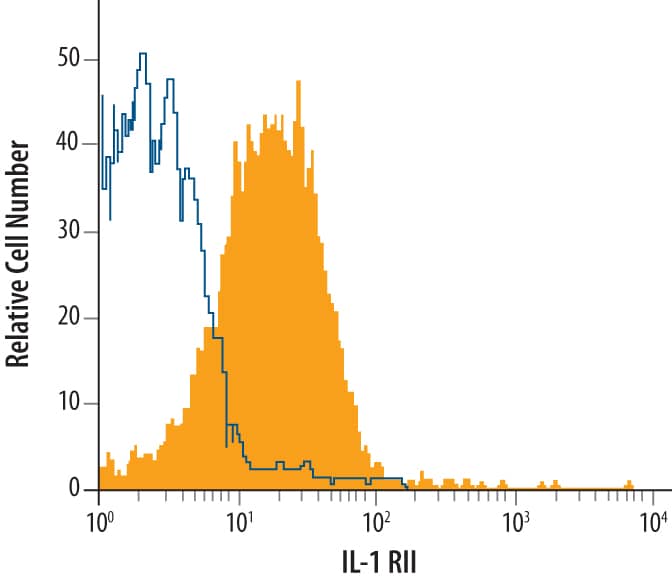
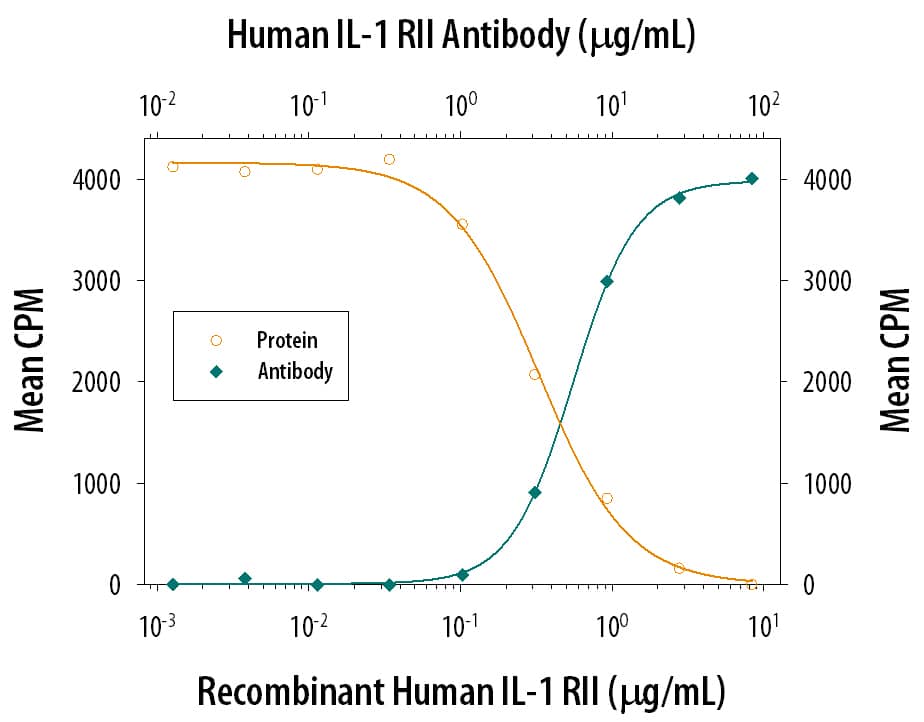
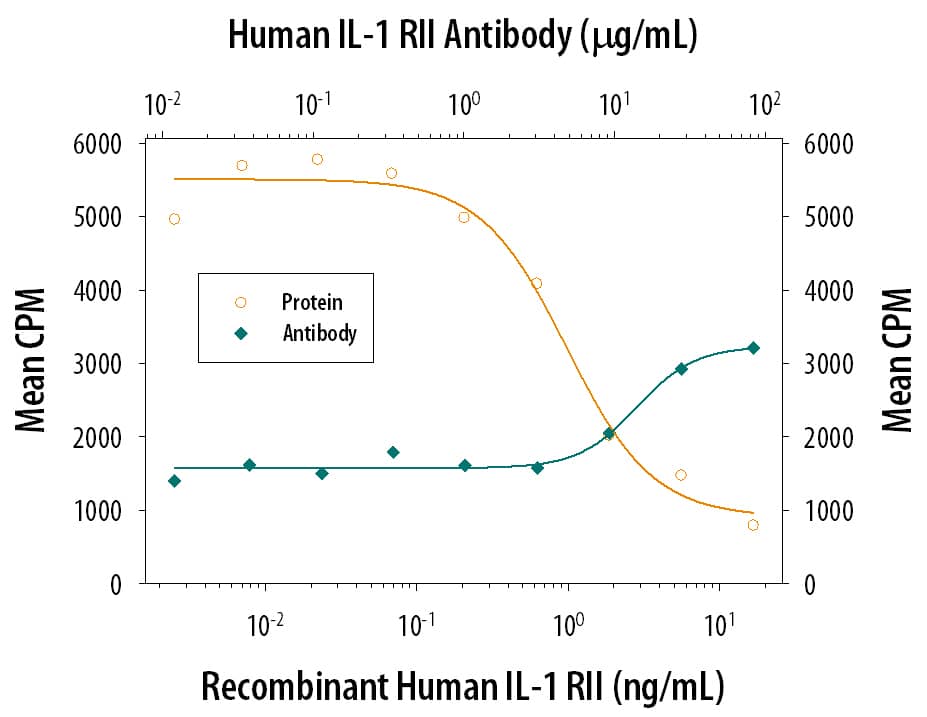
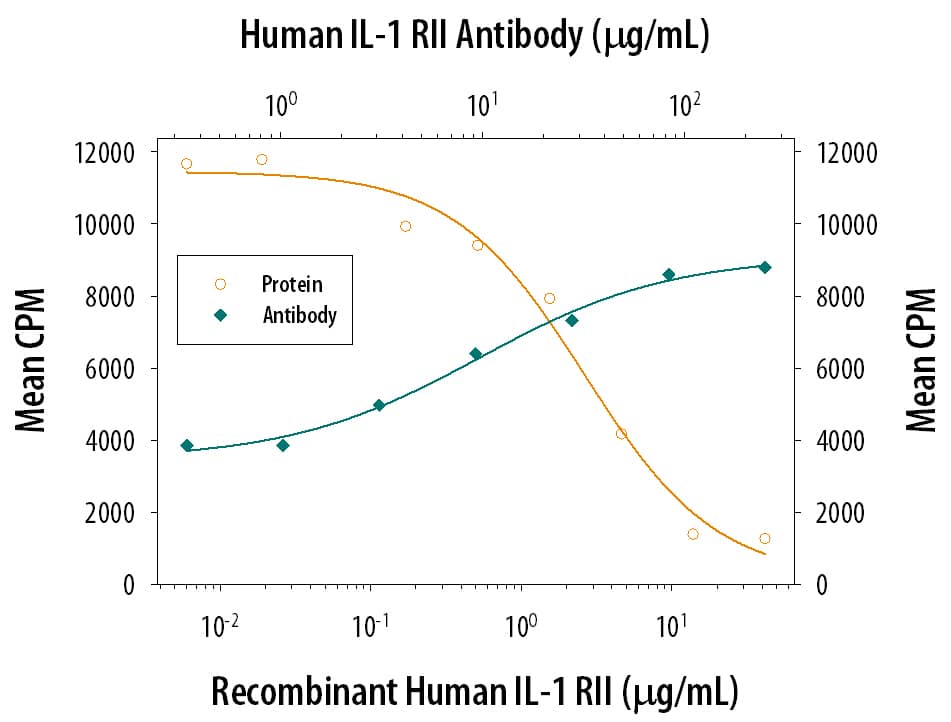
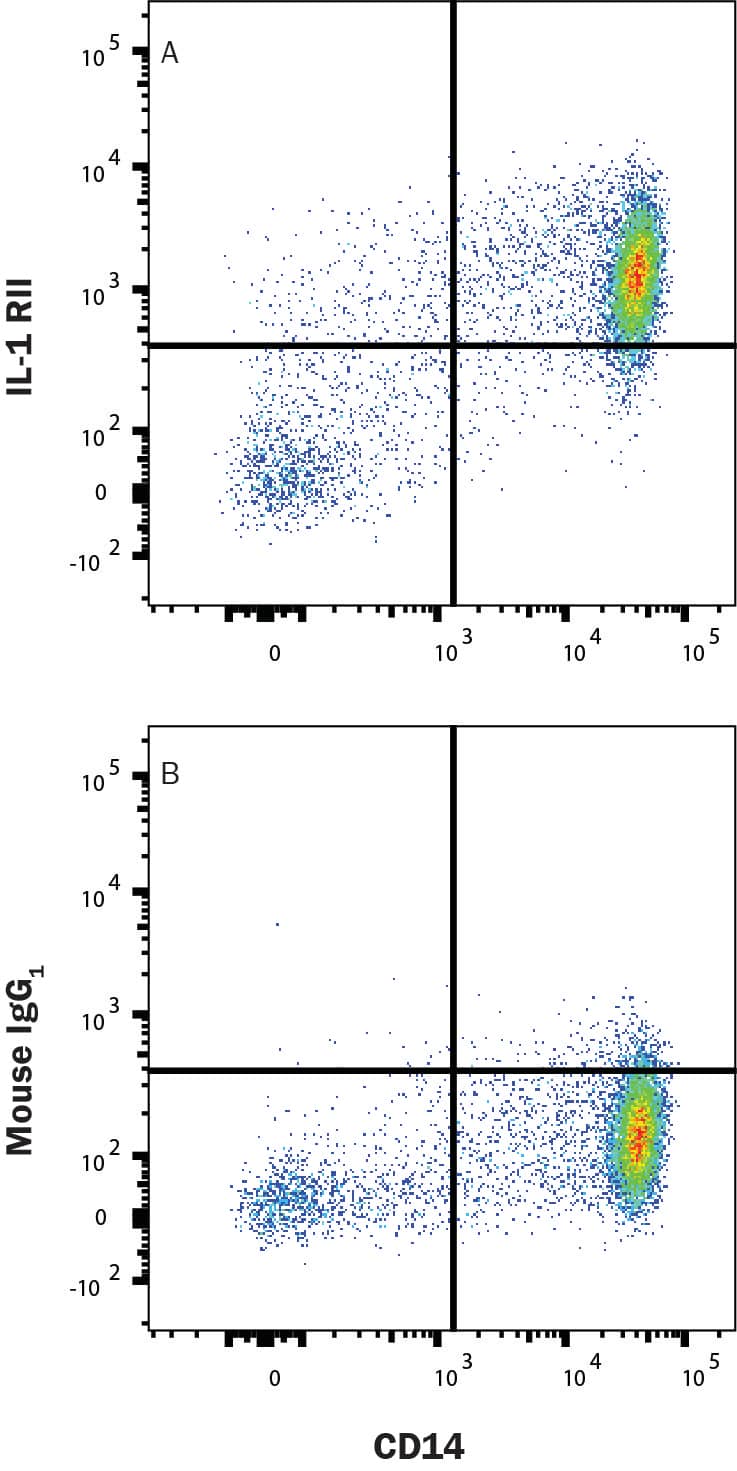

![Western Blot: IL-1 RII Antibody [NBP1-32681] Western Blot: IL-1 RII Antibody [NBP1-32681]](https://resources.bio-techne.com/images/products/IL-1-RII-Antibody-Western-Blot-NBP1-32681-img0012.jpg)
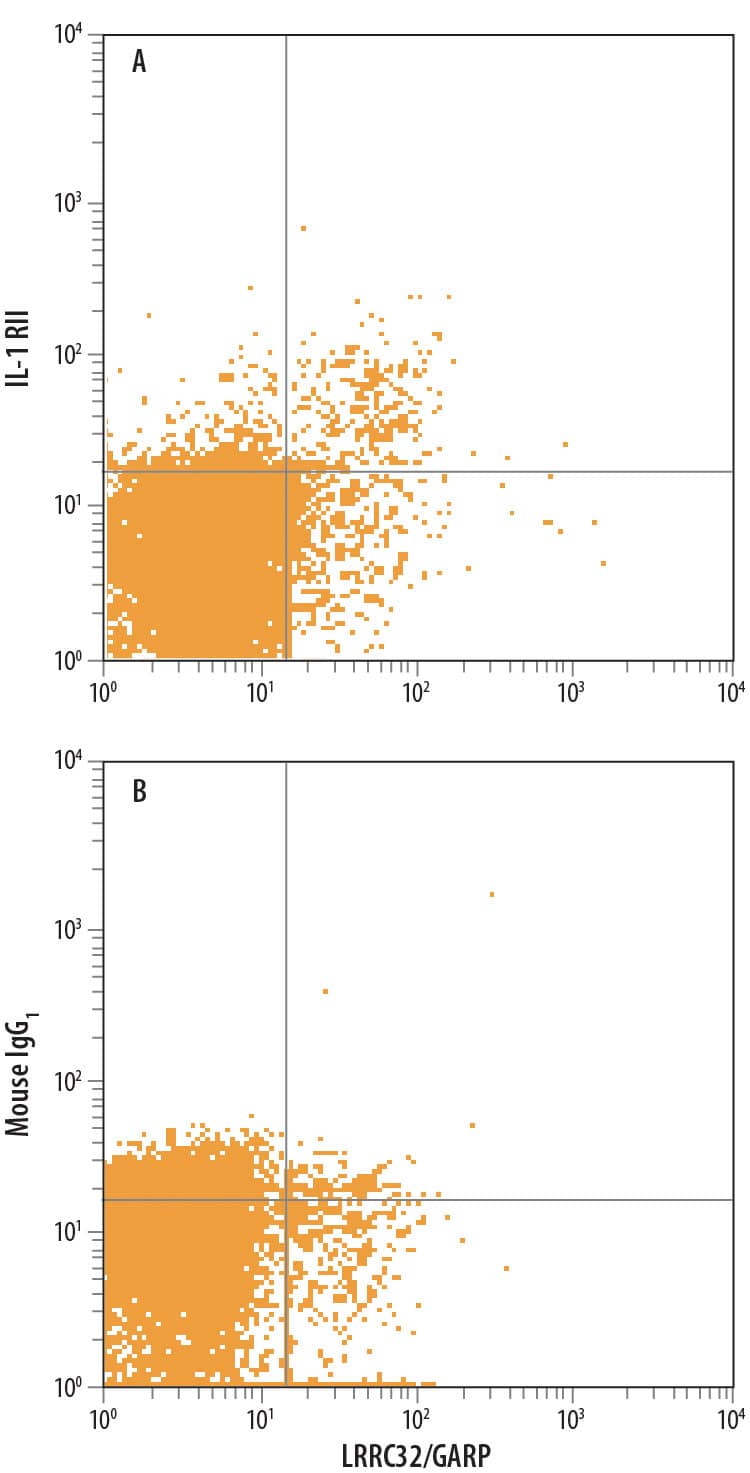
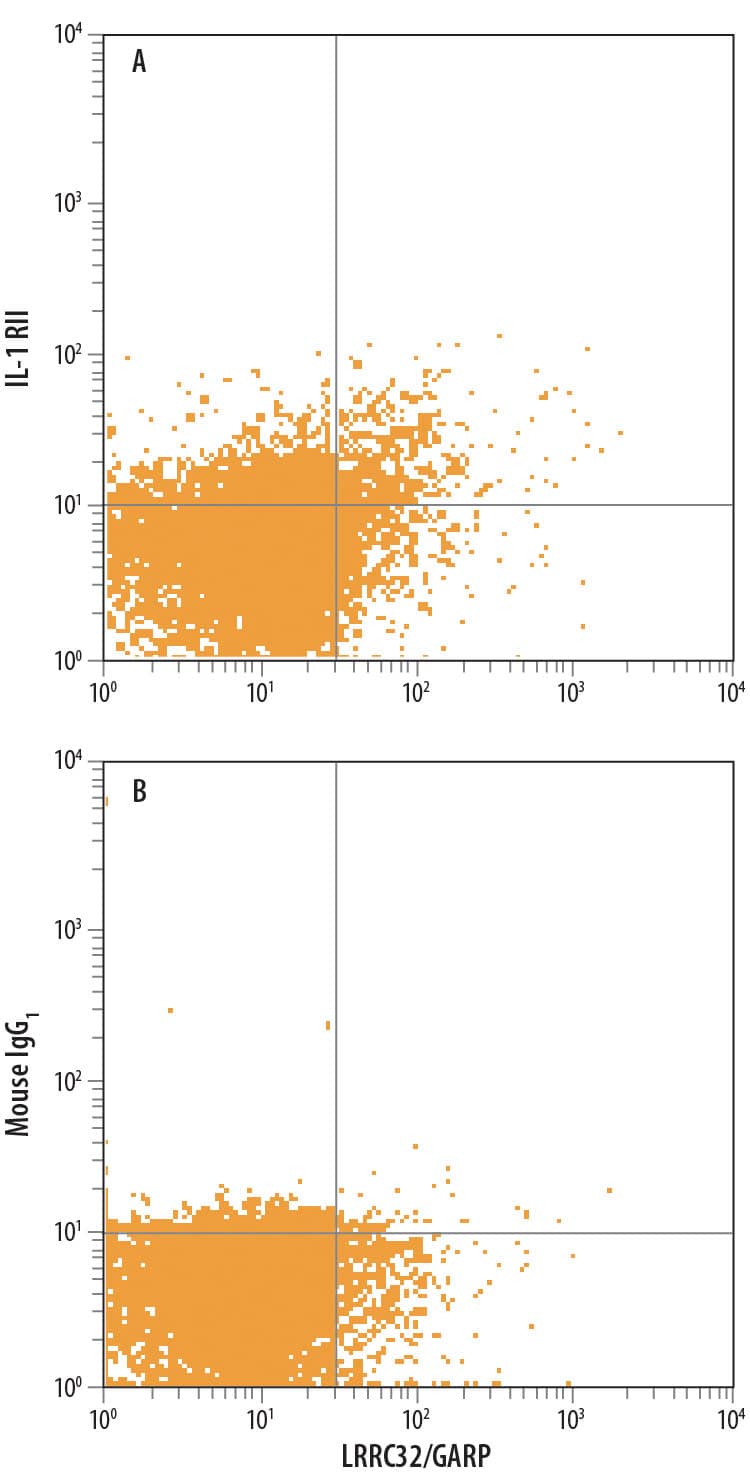

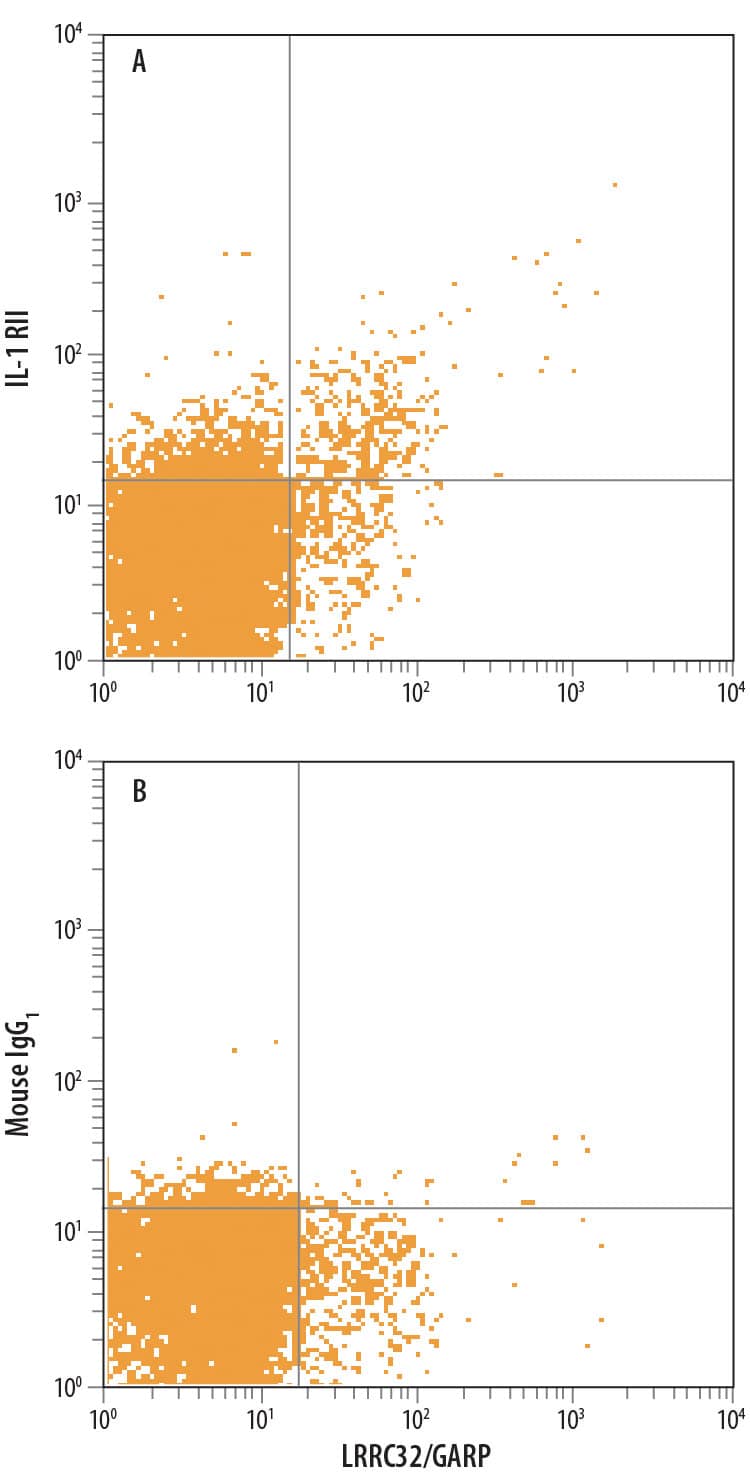
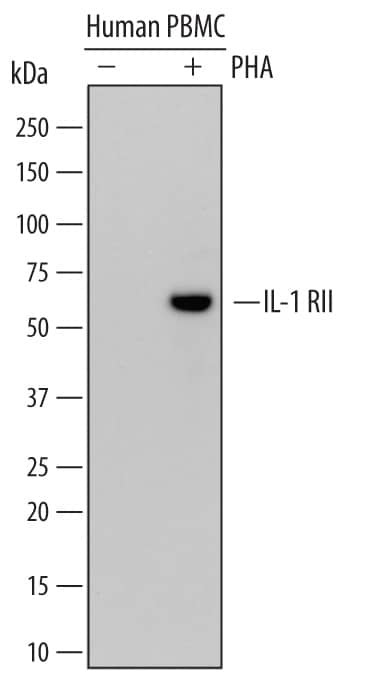

![Western Blot: IL-1 RII Antibody [NBP1-86550] Western Blot: IL-1 RII Antibody [NBP1-86550]](https://resources.bio-techne.com/images/products/IL-1-RII-Antibody-Western-Blot-NBP1-86550-img0005.jpg)
![SDS-PAGE: Recombinant Human IL-1 RII Isoform 1 His Protein [NBP2-61984] SDS-PAGE: Recombinant Human IL-1 RII Isoform 1 His Protein [NBP2-61984]](https://resources.bio-techne.com/images/products/Recombinant-Human-IL-1-RII-Isoform-1-Protein-SDS-Page-NBP2-61984-img0001.jpg)
![Immunohistochemistry-Paraffin: IL-1 RII Antibody (RM0014-7D7) - Azide and BSA Free [NB110-85472] Immunohistochemistry-Paraffin: IL-1 RII Antibody (RM0014-7D7) - Azide and BSA Free [NB110-85472]](https://resources.bio-techne.com/images/products/IL-1-RII-Antibody-RM0014-7D7-Immunohistochemistry-Paraffin-NB110-85472-img0004.jpg)
![Western Blot: IL-1 RII Overexpression Lysate [NBL1-11928] Western Blot: IL-1 RII Overexpression Lysate [NBL1-11928]](https://resources.bio-techne.com/images/products/IL1R2-Overexpression-Lysate-Adult-Normal-Western-Blot-NBL1-11928-img0002.jpg)
![Western Blot: IL-1 RII Overexpression Lysate [NBL1-11927] Western Blot: IL-1 RII Overexpression Lysate [NBL1-11927]](https://resources.bio-techne.com/images/products/IL1R2-Overexpression-Lysate-Adult-Normal-Western-Blot-NBL1-11927-img0002.jpg)